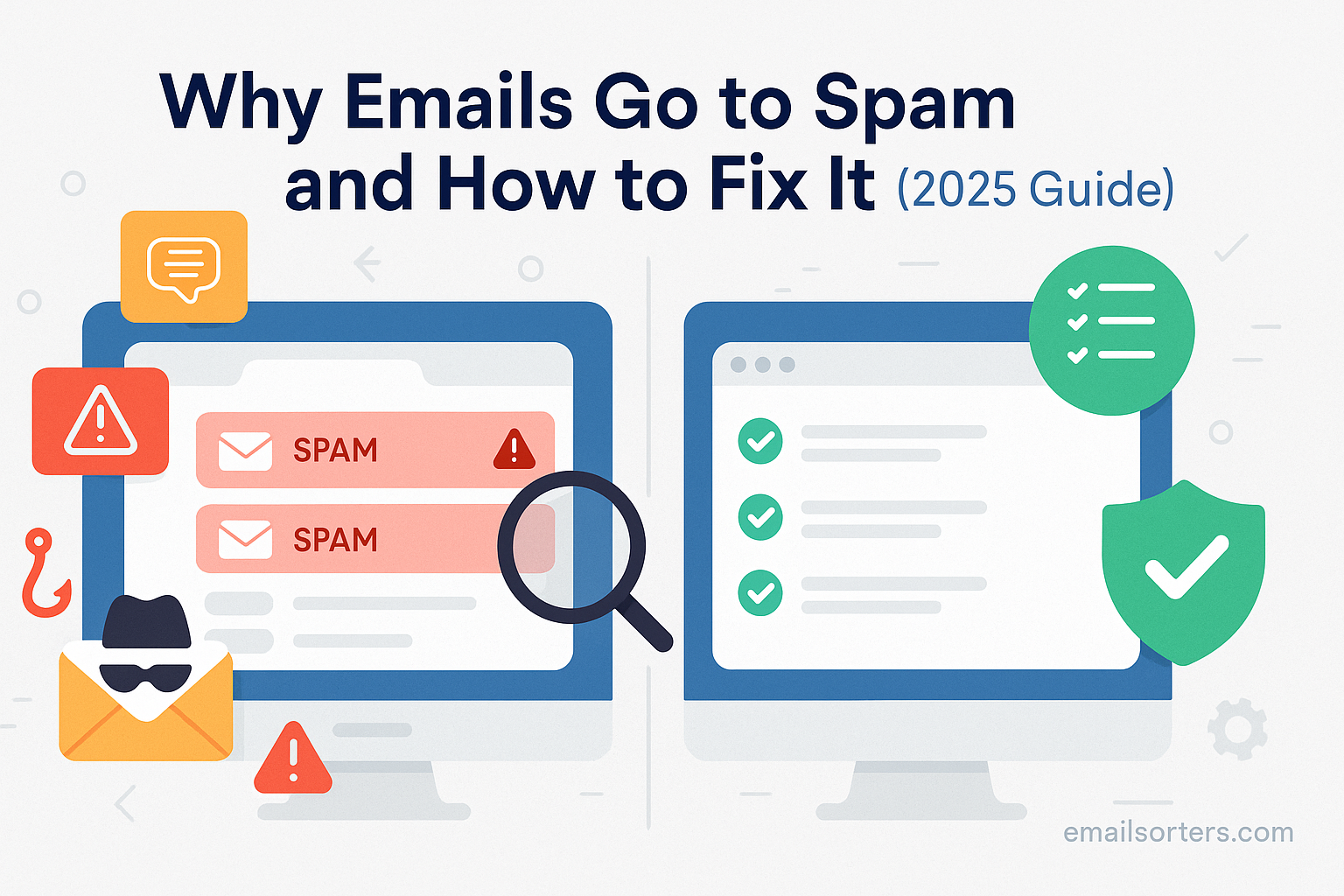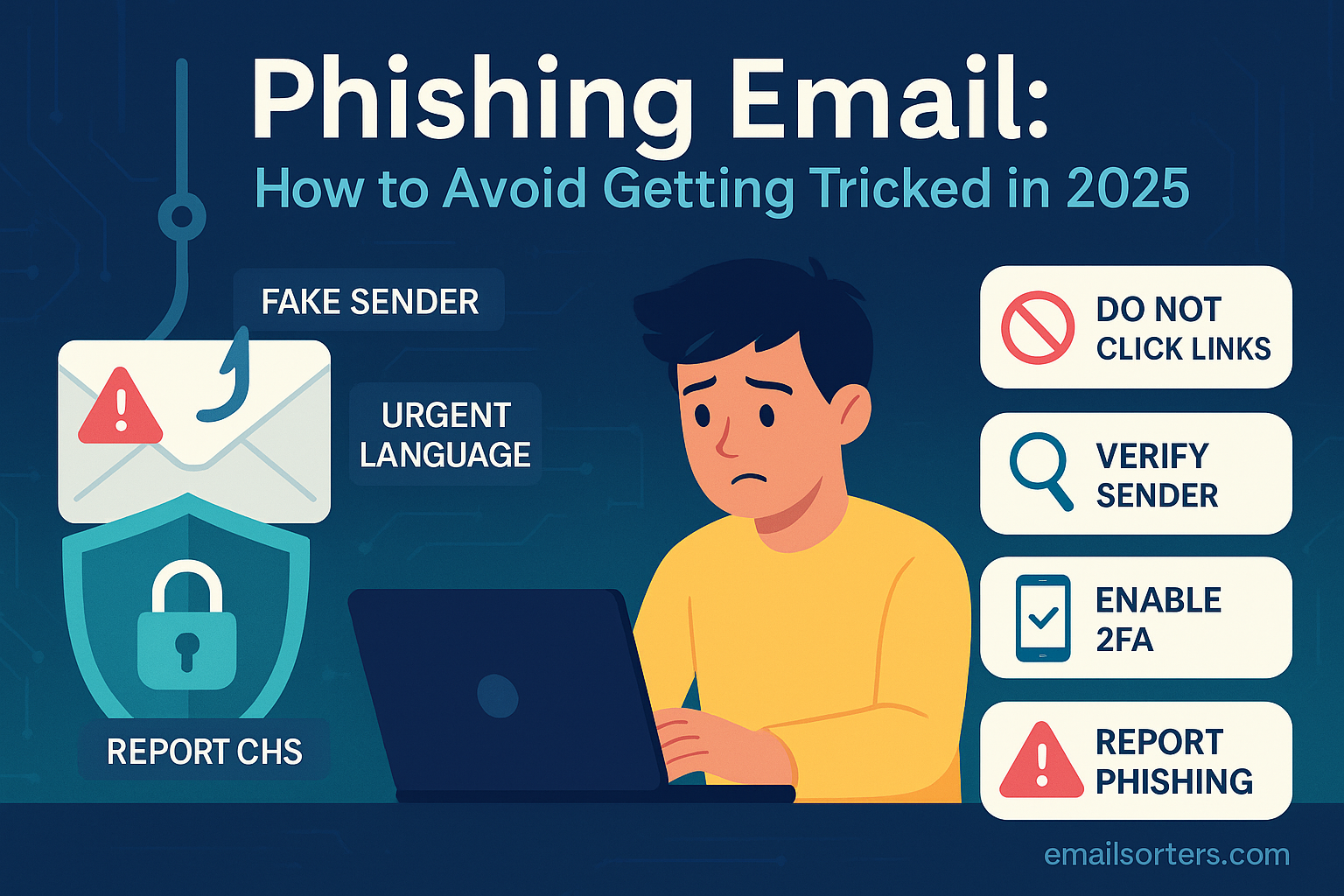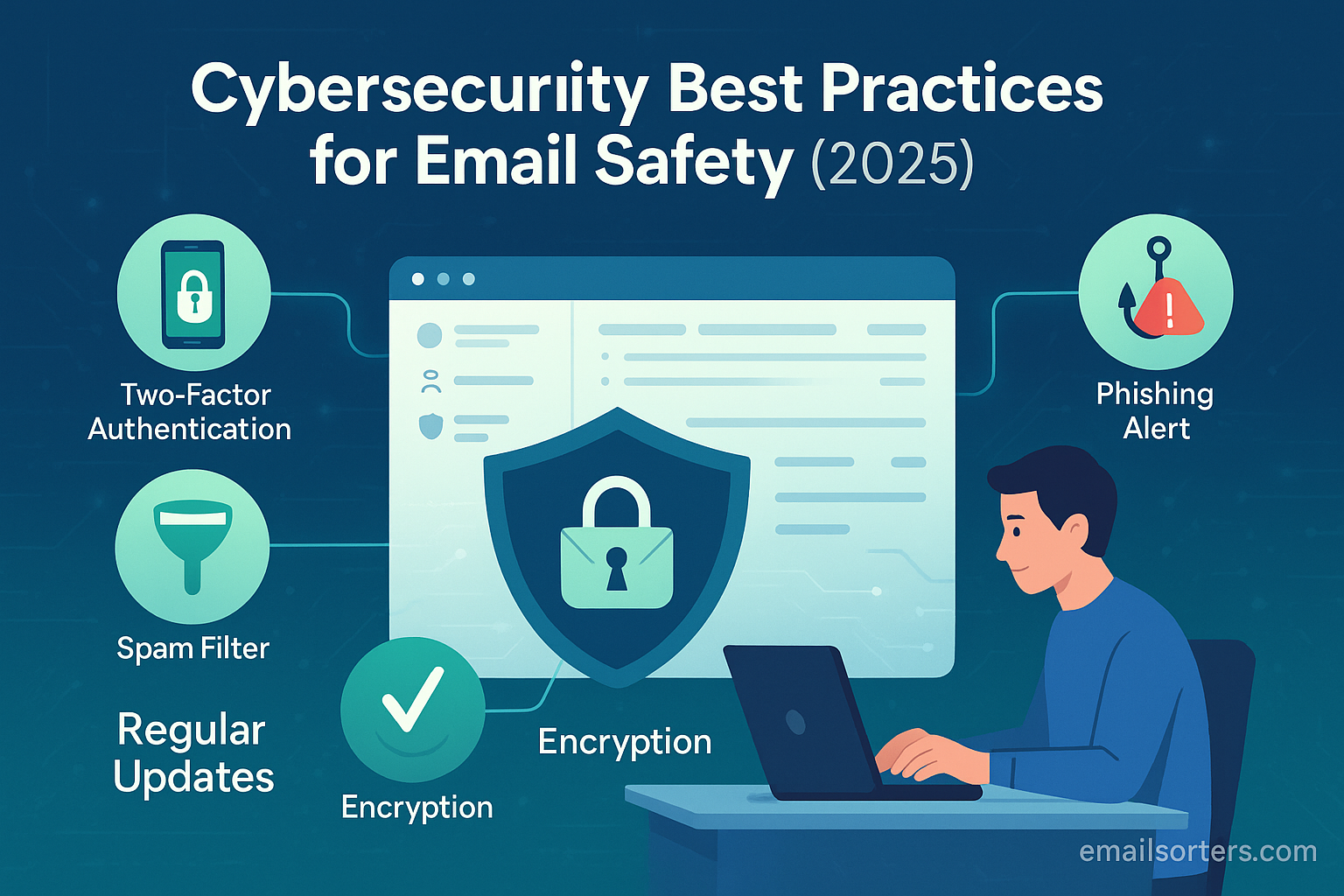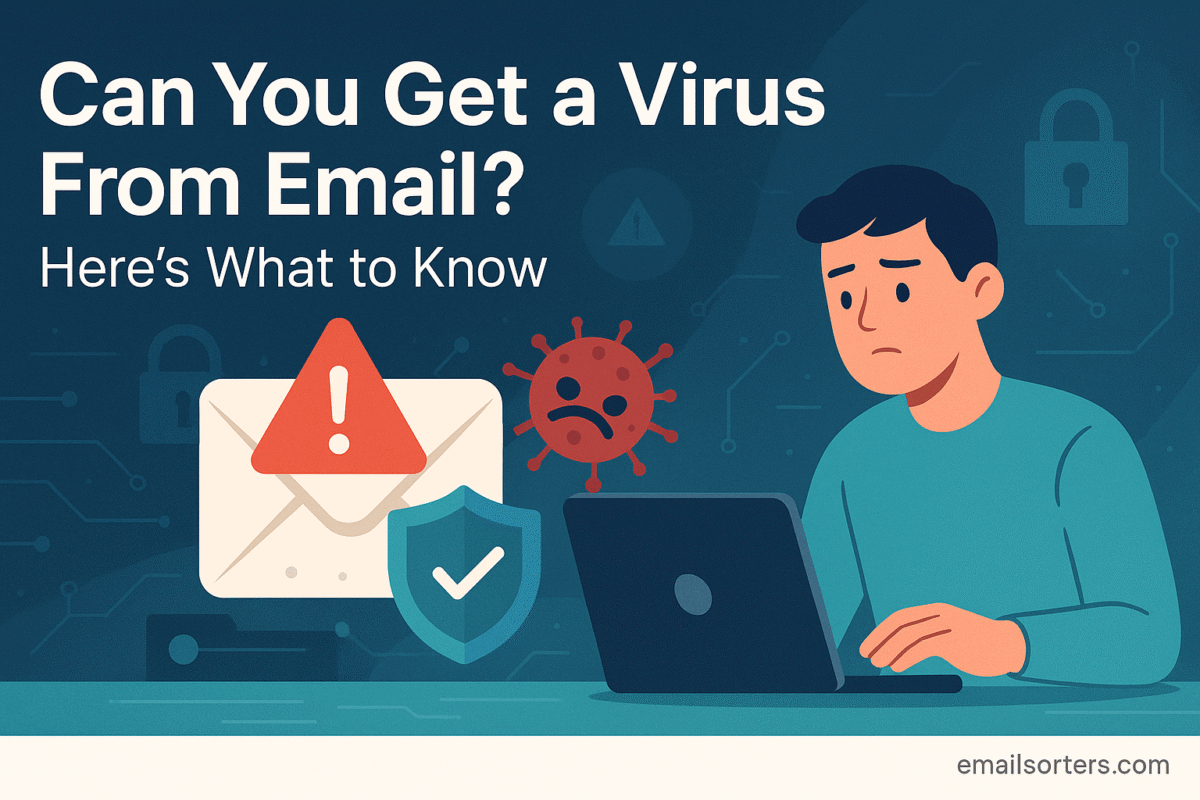A comprehensive 2025 guide explaining why emails land in the spam folder and how to fix it. Learn about sender reputation, content filters, and technical fixes for both senders and receivers.
It is one of the most disheartening experiences in the digital world. As a sender, you spend hours crafting the perfect email, a thoughtful marketing message, a critical business proposal, or a heartfelt note, only to discover it was never seen, lost to the recipient’s spam folder. From the other side, as a receiver, the feeling is one of panic when you realize a long-awaited job offer, an urgent client approval, or a confirmation for a booking was silently filtered away as junk. This breakdown in communication is frustrating, costly, and far too common.
The journey an email takes from “send” to “inbox” in 2025 is a complex dance governed by a silent, powerful gatekeeper: the spam filter. The decision to deliver a message to the inbox or banish it to the junk folder is not random. It is the result of a sophisticated judgment based on hundreds of signals, from the sender’s reputation and technical configuration to the email’s content and the recipient’s past behavior. Understanding this process is the first step toward fixing the problem.
Imagine a world of reliable communication. For senders, this means having the confidence that your carefully constructed messages will reach their intended audience every time. For receivers, it means the assurance that your inbox is a trustworthy space where no important message ever gets lost. This ideal is not out of reach. It requires a clear understanding of the rules of email deliverability.
This guide is designed to demystify the spam folder. We will explore the core reasons why emails go astray and provide a definitive roadmap for both senders and receivers on how to solve deliverability problems, ensuring your important messages always find their way home.
The Core Reasons Emails Are Marked as Spam
To solve the problem, we must first understand the four pillars on which spam filters build their judgment.
The first is sender reputation. Internet Service Providers (ISPs) and email services like Gmail and Outlook assign a trust score to every domain and IP address that sends email. A low score, earned through spam complaints or poor practices, is a primary reason for being filtered.
The second pillar is the email’s content. The words, links, images, and attachments within your message are all scrutinized for characteristics commonly associated with spam.
The third, and perhaps most critical from a technical standpoint, is email authentication. This is the behind-the-scenes verification process that proves a sender is who they claim to be.
Finally, user engagement is a powerful factor. How recipients interact with your emails—by opening, clicking, replying, or marking them as spam—directly influences your future deliverability.
How to Keep Your Emails Out of the Spam Folder
If your emails are not reaching the inbox, the responsibility lies with you to prove to receiving mail servers that you are a legitimate and trustworthy sender. This involves a deliberate focus on your reputation, technical setup, and content quality.
Building and Protecting Your Sender Reputation
Your sender reputation, tied to both your sending IP address and your domain, is your most valuable asset in email deliverability. A new domain starts with a neutral reputation that you must build over time. You can accomplish this by sending high-quality, desired emails consistently to an engaged audience. Start with a small, highly engaged list and grow it gradually. This process, often called “warming up” an IP or domain, shows ISPs that your sending patterns are predictable and positive.
Conversely, certain actions can quickly damage your reputation. Sending emails to purchased or scraped lists is one of the fastest ways to get flagged, as these lists are often filled with invalid addresses and spam traps. High bounce rates and a high number of spam complaints are strong negative signals that will lower your trust score. It is critical to regularly clean your email lists, removing unengaged subscribers and invalid addresses to maintain a healthy and responsive audience.
Mastering Technical Email Authentication
In 2025, proper technical authentication is non-negotiable. It is the foundation upon which sender trust is built. There are three key records you must have correctly configured in your domain’s DNS settings.
The first is SPF, or Sender Policy Framework. Think of this as a public list of all the servers and services authorized to send email on behalf of your domain. When an email arrives, the receiving server checks the SPF record to see if the sending server is on the approved list. If it is not, the email is immediately suspicious.
The second is DKIM, or DomainKeys Identified Mail. This provides a digital signature to your emails. A unique, encrypted key is added to the email header, and the receiving server uses a public key listed in your DNS to verify it. A successful DKIM check proves two things: that the email genuinely came from your domain and that its content has not been tampered with in transit.
The third, and arguably most important, is DMARC, or Domain-based Message Authentication, Reporting, and Conformance. DMARC sits on top of SPF and DKIM. It tells receiving servers what to do with emails that fail either the SPF or DKIM check—whether to quarantine them or reject them outright. It also provides valuable reports, giving you visibility into who is sending email from your domain and whether there are any authentication issues. A properly configured DMARC record is one of the strongest signals you can send that you take email security seriously.
Crafting Content That Inbox Providers Trust
While technical setup is paramount, the content of your email still matters. Modern spam filters have moved beyond simple keyword triggers, but they still analyze the overall message for spam-like characteristics. Avoid using excessive capitalization, multiple exclamation points, and overly salesy language. Maintain a healthy balance between images and text; emails that are just one large image are often flagged.
Furthermore, be cautious with links. Use full, clear links whenever possible, and avoid using obscure link shorteners that can be associated with malicious activity. Most importantly, your email must provide a clear and simple way for users to unsubscribe. Hiding the unsubscribe link or making the process difficult is a major red flag for ISPs and a sure way to generate spam complaints.
How to Stop Legitimate Emails From Going to Spam
If you are consistently missing important emails, you have the power to retrain your inbox. Your spam filter learns from your actions, and you can guide it to make better decisions.
Why Your Inbox Is Being Overly Cautious
Your spam filter has been shaped by your entire history with your email account. Every time you have marked a message as spam, you have provided a piece of data that helps the filter identify similar messages in the future. If a legitimate newsletter you are missing looks similar to a promotional email you previously flagged, the filter may make a mistake. Additionally, if the sender is using a new domain or has a temporarily low sender reputation, your inbox provider may be overly cautious and filter their messages until they establish a history of positive engagement.
Actively Training Your Spam Filter
You have several direct ways to correct your filter’s behavior. The single most powerful action you can take is to find a legitimate email in your spam folder and use the “Report not spam” or “Looks safe” button. This immediately tells the mail provider that it made a mistake and heavily influences its future decisions for that sender and for similar types of content. It is a good practice to check your spam folder once every few days to rescue any important messages.
For senders you know you always want to hear from, a more permanent solution is required. The most direct way to fix this for a specific sender is to add them as a safe sender in Gmail or create a similar “whitelist” rule in your email client. This creates a permanent directive that tells your inbox to always deliver messages from that specific address, bypassing the standard spam filter entirely.
Using Tools for Better Inbox Control
Sometimes, your provider’s built-in filter may be too aggressive or not effective enough. If you find your inbox is still cluttered with junk mail despite your efforts, you might consider a more powerful solution. You can explore some of the best email spam blockers, which are third-party tools that can offer more advanced and granular control over what reaches your inbox. Before you block or trust a sender, you can also get more information about them. Using a free email spam checker can provide a quick analysis of a sender’s reputation and help you make a more informed decision.
A Unified Approach to Email Deliverability
Ultimately, ensuring reliable email communication is a shared responsibility. Senders must commit to following technical best practices, building a positive reputation, and sending content that their audience genuinely wants. At the same time, receivers must provide active feedback to their filters by rescuing legitimate messages and whitelisting trusted senders. When both sides participate, the entire system becomes more efficient and trustworthy. The reasons for mail delivery issues can be complex, and for an official overview from Google’s perspective, their guide on why Gmail marks legitimate emails as spam offers valuable additional insight into this dynamic.
The spam folder is not a random black hole. It operates on a clear and logical set of rules based on trust, authentication, content, and user feedback. By understanding and addressing these core principles, both senders and receivers can work together to build a more reliable and effective communication ecosystem, ensuring the right messages always get through.




